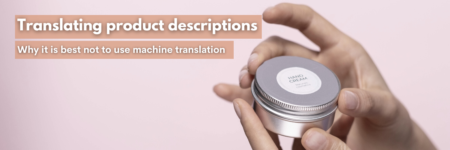Keyword research per product versus per category in the beauty industry – which is more effective?
Owners of online shops in the beauty industry often find it extremely difficult to establish and then maintain a strong presence in the market. The direct reason is huge competition, which makes acquiring new customers increasingly harder. Luckily, what could be of an equally huge help here is SEO.
Proper optimisation of product cards can make it easier for potential customers to find desired items on the internet. But how to deal with the issue if our shop features hundreds or even thousands of articles? How to approach the subject if we have limited time and budget? Here’s the good news – there are ways.
The power of keywords in the beauty industry
You can’t optimise product cards if you haven’t identified keywords. Keyword research is one of positioning pillars, which requires knowledge, skills, and appropriate tools. Even though there’s no lack of e-commerce platform owners who try to deal with this single-handedly, it usually proves to be an uphill struggle due to the imposing presence of large brands. One of the biggest challenges here is choosing a strategy that is not only simple to implement but also effective.
What exactly are keywords and what function do they serve in product cards? In a nutshell: they are nothing else than phrases that potential customers type into search engines (Google or the ones integrated into e-commerce platforms). If our content is optimised with search engines in mind, we’re more likely to rank higher. We’ll be more visible, and – in consequence – users will find our products with considerably greater ease.
Keywords come in different shapes and forms, and are selected based on the platform on which we sell a product. While several entries can be adapted without much hustle, the situation becomes somewhat more problematic if we have loads of them. In such cases, we have to begin by determining what strategy will yield us the best keywords.
Keyword research per product
If a product card is to be visible, it should meet a vast array of requirements. One of them is containing content optimised in terms of keywords. SEO in the beauty industry is characterised by huge competitiveness. It entails competing with such brands as Rossmann or L’Oréal. It doesn’t mean, however, that our positioning strategy is doomed to fail from the get-go. The key is selecting the one that would suit us best.
If our shop features items that belong to various categories and have different properties or purpose, we should conduct a per-product analysis. Otherwise, we may fail to account for all crucial features, and our list will turn out chaotic, even when filtered.
This process will be perfect also if we want to focus only on selected items, critical in terms of a given market.
How do we do it at locatheart?
At locatheart, we use a method that has been tried and tested in multiple projects carried out for both larger and smaller brands. If products are so different that they cannot be divided into coherent categories, we need to search for keywords relevant to every single item.
What does the process look like in such a situation?
An SEO specialist receives all the necessary materials. They peruse the specifics of each product, and then, basing on their findings, they identify the most vital phrases.
We take into account where a product card is to be located. We’ll choose different keywords in the case of Google, and different in the case of a search engine embedded within an e-commerce platform. We analyse various types of keywords, for example informative and marketing ones, as well as those related to the brand, location, or product. We also pay attention to so-called long-tail phrases, as they are more likely to make our content stand out from the texts written by our competition. For example:
hair shampoo – 9,200 searches per month
shampoo for oily hair – 3,400 searches
The first phrase is more popular and more frequently typed into the search bar. It doesn’t mean, however, that it will be a better choice in terms of our product optimisation. The other phrase is more precise – it clearly specifies what the user is looking for. Its search rate is lower, so it’s less likely to face severe competition (it needs to be added, however, that sometimes it’s the semantically narrower phrase that faces fiercer competition – to avoid making such mistakes, it’s worth working with specialists).
The finished task is then delegated to yet another SEO specialist.
They preliminarily check the correctness and usefulness of phrases.
The next step is sending the lists to native speakers who live in the market relevant to the project.
At locatheart, we want to be certain that we deliver phrases of the highest quality, fully adapted to a given locale.
After this two-phase verification, the ready document is delivered to the client.
Even though performing keyword research for every single product may be time-consuming, it allows for conducting an in-depth analysis and finding a perfect match. Not always, however, is this action necessary. Sometimes, products are similar enough to be grouped into larger categories.
Keyword research per category
In principle, keyword research per category resembles keyword research per product. What distinguishes it, however, is that it requires us to take more factors into consideration. First, we need to determine to what extent our products are similar to each other, and to what extent they differ. Perhaps they have unique formulas or properties, or the purpose of one of them varies from the rest. Perhaps they are distinguishable only in terms of colour or packaging. We need to check it thoroughly before we begin preparing the list of keywords. Thanks to this, we’ll know what filters to apply and how to group the items.
When it comes to finding phrases per category, we can approach the subject in two ways.
A comprehensive list of keywords that encompasses elements relevant to all articles.
Phrases are not mapped, and the copywriter is free to choose those that – to the best of their knowledge – are the most suitable. More often than not, however, we mark phrases that we recommend for titles or headers.

Keyword repository.
It’s a broad list of phrases, tagged and mapped. It differs from the previous one in that the keywords are grouped, and convenient filters facilitate sorting.

In the case of this project, phrases were grouped based on features such as form, ingredients, and purpose. Thanks to this, it was easier for us to identify keywords related to a specific product.
The greatest merit of researching per category is that you don’t have to conduct the same analysis over and over again. If we had to do it for each item separately, it would cost us a lot more time, and, to top it off, the quality of phrases wouldn’t be higher.
Moreover, the category in the online shop won’t always match the category determined by keyword research. In some situations, the category in the shop is too broad for us to apply all the phrases from the list. If that’s the case, we have to divide the products into new, slightly narrower categories, thanks to which we’ll maintain readability.
Keyword research per category is, admittedly, less precise, but significantly quicker to perform. It also allows for cost management, as it lets us create broader or narrower categories of respectively lower or higher match precision. It proves indispensable in the case of large shops and whenever there’s a need for immediate action – for example when we enter a new market and want to introduce our entire assortment all at once. Phrases per category also come in handy if we plan to broaden our assortment within a given category.
Each project is unique and needs an individual approach. Sometimes, the best option would be keyword research per product, and sometimes – per category. To a considerable degree, this would depend on the number of items and their mutual similarity. Only after a tentative analysis of the assortment can we select the right process.
Keyword research per product will always be maximally adapted to a singular item, but it won’t be the most effective in the context of a greater number of related products. Here, the more suitable method would be research per category. Not only would it prove quicker, but it would also be more cost-effective – without compromising on the overall quality.






Leave a Reply